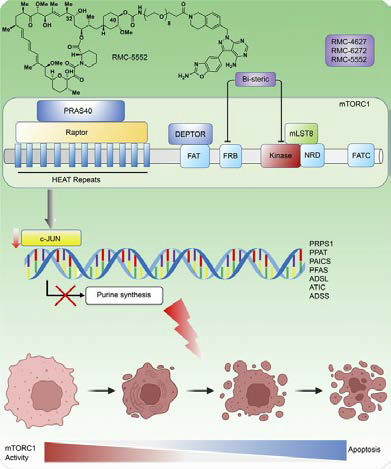The Latest in LAM Science: Bi-steric mTORC1 inhibitors induce apoptotic cell death in tumor models with hyperactivated mTORC1

The mTORC1 pathway is a signaling pathway in cells in the body that controls cell growth and survival. In many cancers and in LAM, this pathway does not work properly, and is stuck in an “on” position. Several drugs that target this pathway have some benefit, such as rapamycin. But they do not affect a protein called 4EBP1, which is an important part of the mTORC1 pathway. We thought that a new kind of drug, called bi-steric inhibitors, would work better than rapamycin and other older drugs, to block more effectively the “on” signal coming from mTORC1 in cancers and in LAM. We tested this idea in several different ways, including on cancer/LAM cells in the lab and on tumors from these cells in mice. We found that bi-steric inhibitors were more effective at inhibiting cancer/LAM cell growth, and more effectively inhibited mTORC1. In the mouse models of cancer/LAM, bi-sterics were more effective at inhibiting tumor growth, and in some cases completely killed the cancer cells. We also looked at how bi-steric inhibitors changed the genes and molecules in the cancer/LAM cells and saw that they had stronger effects than rapamycin. One of the effects was that bi-steric inhibitors blocked production of critical building blocks for DNA synthesis, and induced cancer/LAM cell death. This research has recently been published in the Journal of Clinical Investigation (2023 133:e167861 PMID: 37909334). This means that bi-steric inhibitors may be a good way to treat cancers and LAM that are caused by mTORC1 pathway activation. One of the bi-steric inhibitors, RM-5552, has been tested in a cancer patient clinical trial. All bi-sterics studied were produced and this research was funded by Revolution Medicines.